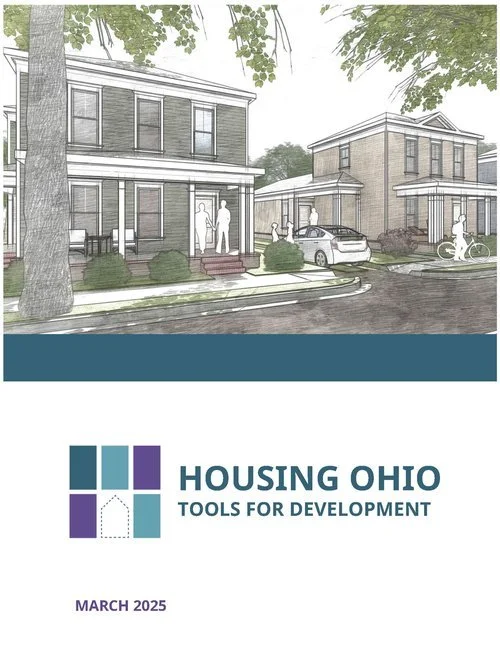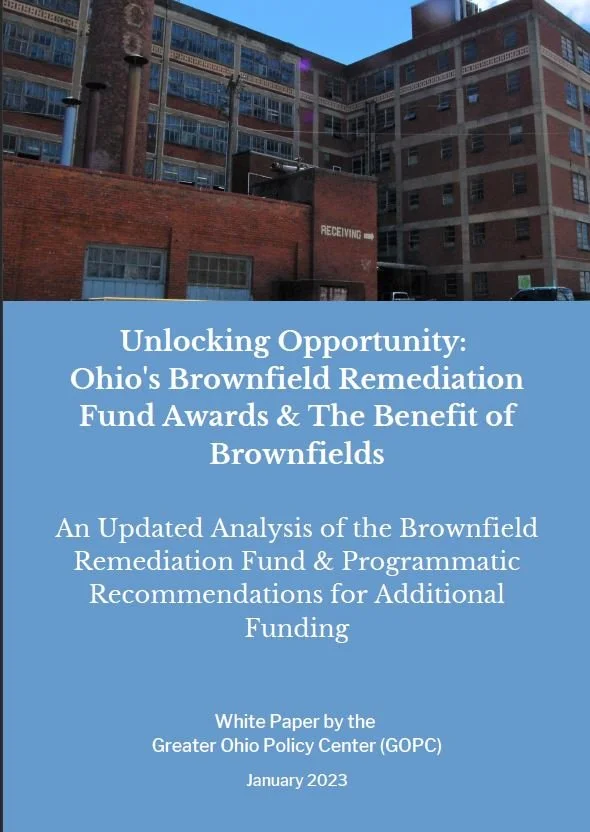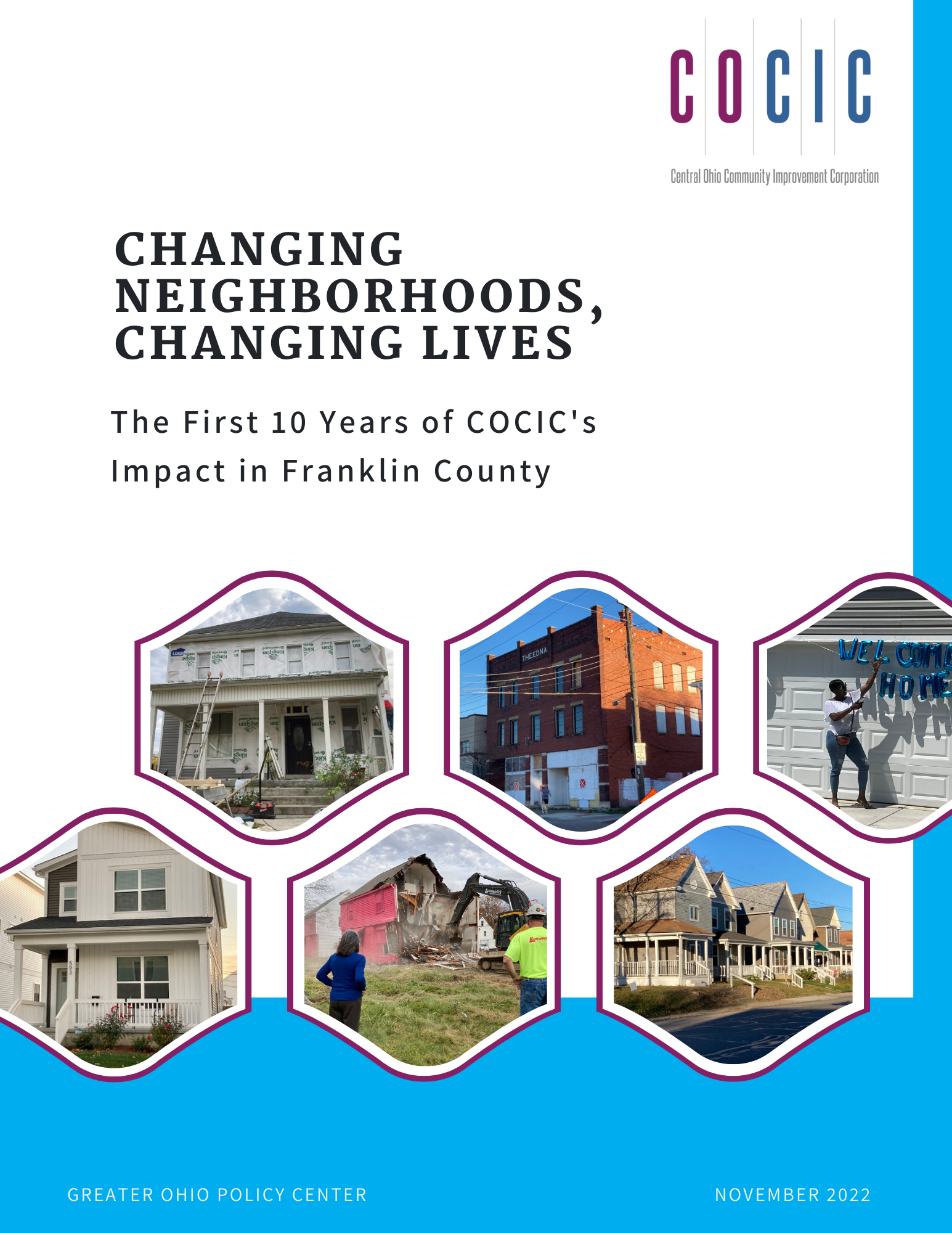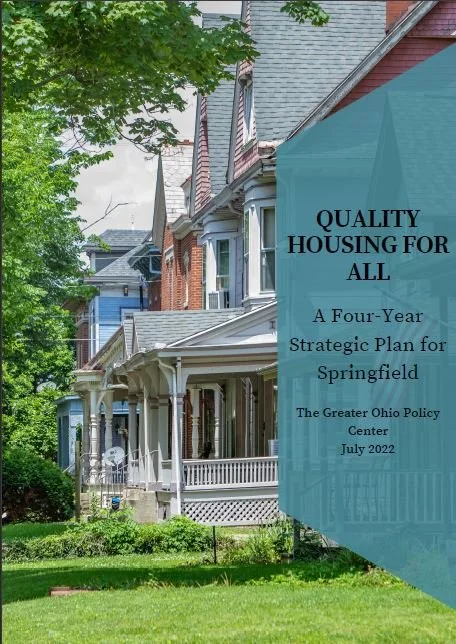
Volume 2 builds on the case studies presented in the first edition by featuring additional examples of outstanding improvements local leaders and communities have undertaken.
To aid in new project development, both the full report, as well as these separate guides include a list of federal and state funding sources and technical assistance programs that support planning and implementation.
Since 2021, Ohio’s General Assembly has committed $900 million to support brownfield assessments and cleanup projects. The Brownfield Remediation Program (BRP) and its significant investment has established a new precedent around brownfield remediation and redevelopment efforts since the sunset of the Clean Ohio Revitalization Fund in 2013. The BRP is on track to catalyze significant economic impacts and community benefits across Ohio.
Local actors have a lot to juggle and the options for equitable development programming can be overwhelming. So how can community leaders determine which strategies and programming to pursue? This toolkit offers a roadmap for identifying suitable equitable development programming that is driven by an evaluation of a community’s unique assets. This approach is based on the framework outlined in Moving Beyond Conventional Economic Development Practice: An Asset-Based Framework for Sustainable Communities and it builds on the principles described in Equitably Developing America’s Smaller Legacy Cities and Equitable Real Estate Development Strategies for Weak Markets.
Housing production has slowed, prices have surged, and community leaders are searching for tools to address these challenges effectively.
The Ohio REALTORS™ and Greater Ohio Policy Center have developed this guidebook which offers three voluntary tools that local governments, developers, land banks, and homeowners can use to promote infill housing across Ohio.
These tools can be applied individually or in combination to overcome barriers to housing development on vacant lots in established neighborhoods.
Greater Ohio Policy Center has released Ohio’s GDP in National Context: Ohio’s Legacy Places Matter a Lot, a white paper on the state’s population trends and their impact on the state’s economy.
The Eastgate Regional Council of Governments has unveiled a Regional Housing Strategy for Mahoning and Trumbull Counties. Developed by the Greater Ohio Policy Center and Reinvestment Fund, the Strategy provides recommendations for programs and initiatives that will help continue to stabilize and strengthen housing markets in the Mahoning Valley.
Greater Ohio Policy Center (GOPC) is proud to share “The Benefits of Brownfields for Ohio’s Communities: An Analysis of the Brownfield Remediation Program Over the Past Three Years”. This white paper examines the $659 million awarded between 2022 and 2024 for the Brownfield Remediation Program. The white paper also makes the case for allocating additional dollars to a statewide brownfield grant program in the next state Operating Budget.
The Greater Ohio Policy Center (GOPC) has been advocating for greater investment in Active Transportation for the past several years. This work has involved growing the availability of resources at the state level, as well as working with local communities to raise awareness about the availability of resources at the federal, state, and philanthropic levels. We have also worked to educate communities throughout Ohio by highlighting well-developed active transportation projects and initiatives throughout the state.
Legacy cities and older suburbs often have a difficult time attracting residential developers, even though there is a great need for new housing units. Many historical factors increase development risk beyond what private investors can tolerate, including complicated older sites, low sales prices, antiquated regulations, and lending restrictions.
The guide provides tips for implementing an active transportation project, funding sources communities in Ohio can access, and technical assistance programs at the state and federal levels that can help plan and fund projects. The showcased projects range from modest in scale to complete overhauls of a district streetscape.
The city of Akron, in partnership with GOPC and the Reinvestment Fund, has released the Akron Housing Action Plan and Market Value Analysis. The Action Plan and Market Value Analysis will help city officials and other leaders in Akron spur new housing development, keep long-time residents in their homes, and improve the quality of existing homes for all Akron residents.
Community leaders in Portsmouth have recently released the Portsmouth Housing Action Plan, which focuses on strategies to increase housing options in the city. This Plan is a second phase of work by the Greater Ohio Policy Center (GOPC), which completed a housing market analysis for Portsmouth in 2021.
The Greater Ohio Policy Center (GOPC) has released a white paper Unlocking Opportunity: Ohio’s Brownfield Remediation Fund Awards & The Benefit of Brownfields, which analyzes the full grant awards for the Brownfield Remediation Fund and makes the case for additional funding for environmental clean-up.
The need to improve outcomes is acute in legacy cities, where inequities tend to be prevalent and persistent. In partnership with the Lincoln Institute of Land Policy, GOPC has published “Building Equity: Equitable Real Estate Development Strategies for Weak Markets.”
Since 2012, the Central Ohio Community Improvement Corporation, better known as COCIC, has worked tirelessly to create stable homes, reclaim commercial property, and restart real estate markets in Franklin County through direct programming and strategic partnerships.
Ohio + Columbus: A Tale of Two States,” analyzes 2020 Census data to identify significant trends in the state of Ohio and make the case for data-driven polices responsive to current trends.
Building on Momentum: An Argument for State Investment in Public Transit in Ohio, provides an assessment of both the current status of the state's public transportation infrastructure and capacity. The report focuses on why, given shortages of reliable workers, and a growing number of rural elderly and disabled residents who need transportation options, it is critical for Ohio to continue to maintain and grow the historic investments which have been made in public transportation since 2019.
The Greater Ohio Policy Center (GOPC) has released a multi-year strategic housing plan for Springfield. Quality Housing for All: A Four-Year Strategic Plan for Springfield provides community leaders with a roadmap to address current and future housing needs in Springfield. Community leaders have elevated housing as a communitywide priority.
Leaders in the City of Portsmouth identified housing as an important component of city’s revitalization journey, launching a comprehensive housing analysis as a first step to understand housing conditions across the city. Various community partners engaged the Greater Ohio Policy Center (GOPC) to analyze market rate and affordable housing conditions within the municipality.
Former industrial and manufacturing hubs like Dayton—known as legacy cities—need not choose between economic growth and equity, as growth is most durable when it benefits everyone, according to a new Policy Focus Report and accompanying Policy Brief published by the Lincoln Institute of Land Policy in partnership with the Greater Ohio Policy Center. Legacy cities can promote long-term growth while addressing racial and economic inequities laid bare by COVID-19 using strategies mapped out in Equitably Developing Smaller Legacy Cities: Investing in Residents from South Bend to Worcester. Using case studies of successful initiatives, the report guides practitioners through equitable investment in both physical projects and people.
For over six decades, working Ohioans have paid income taxes to the jurisdiction where they work. Recognizing the unprecedented situation created by the pandemic, the Governor and Legislature established the emergency measure to minimize burdensome paperwork on businesses and moderate the financial impacts of the pandemic on cities.
In two reports, GOPC shows how attempts to repeal the emergency response is short-sighted and will seriously threaten Ohio’s large and small communities, jeopardizing Ohio’s economic competitiveness.
GOPC’s new working paper, Local Interventions for Eviction Prevention, profiles initiatives from around Ohio to provide ideas and templates for communities that need housing stabilization programming.
A trio of measures would dramatically change municipal income tax collection. GOPC’s new analysis counters short-sighted lawsuit and legislation that would seriously threaten Ohio’s major cities if passed.
Since 2004, the City of Cleveland has used tax abatements to encourage developers, builders, and homeowners to build and substantially rehabilitate housing in the City. The Cleveland Tax Abatement Study was undertaken to better understand the historic usage of the tax abatement program, the value the program generated for the City, and to recommend potential adjustments to the program.
As a first step to improving housing options, The Champaign Economic Partnership commissioned the GOPC to analyze the market rate and affordable housing markets in Champaign County and its four largest communities: the City of Urbana and the Villages of Mechanicsburg, North Lewisburg, and St. Paris.
In service of celebrating and memorializing the accomplishments of the NeighborWorks collaborative of Ohio, Economic Impact of the NeighborWorks Collaborative of Ohio presents the economic and community impact of the Collaborative’s outputs from 2014 to 2018.
Housing in the Champion City: Comprehensive Housing Market Analysis for Springfield, Ohio presents an in-depth analysis of the market-rate and affordable housing markets in Springfield, and recommends policies and strategies that can strengthen the City’s housing market.






























